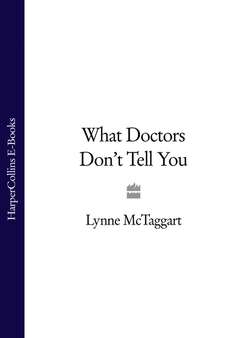Читать книгу What Doctors Don’t Tell You - Lynne McTaggart, Lynne McTaggart - Страница 18
BONE SCANS
ОглавлениеBesides looking for broken bones, x-rays are now being used to screen for osteoporosis. That might be a good idea – if we had a test that could be relied upon to deliver an accurate result. The problem is, as many medical experts agree, that even the latest techniques in bone scanning should be interpreted with caution, since changes in bone mass may not signify anything.80
The instruments are imprecise, multiple measurements may be wrong, even the assumptions upon which we scan bone are open to question – for example, the very notion that bones have a density that can be measured or that we can treat it and effectively reverse bone loss.
The latest souped-up bone scan is the ‘dual energy x-ray absorptiometry’ or DEXA – a fancy sort of x-ray. Again, you are injected with a radioactive liquid beforehand, then asked to lie flat on a table while you are scanned for between a half-hour to an hour or even more if a full three-dimensional shot is required. Measurements are usually taken from the spine, hip, spine, heel and forearm.
But an accurate reading in this technique can easily be knocked off. ‘A walk around the room causes the measurement to change by up to 6 per cent (at the hip), which corresponds to six years of bone lost at the usual rate,’ says Susan M. Ott, associate professor in the Division of Metabolism, University of Washington in Seattle.81 Poor machine quality-control and a high percentage of operator error also throw off results.
The favoured technique, measuring many different areas of the body at the same time – one shot of the top of the leg produces five separate measurements, for instance – also increases the risk of a false-positive reading.
‘Apparently dramatic changes can be taken as indicating improvement or dramatic bone loss but may simply be due to the precision of the measurement and poor repositioning technique,’ wrote David M. Reid, a rheumatologist at City Hospital in Aberdeen, Scotland, and his colleagues.82
Studies show that DEXA tests are not necessarily very accurate. In one study, the scans failed to detect osteonecrosis in one-sixth of confirmed cases.83 Extremes in weight (under- or overweight), age (over 60) and arthritis can throw off the result of a test. In fact, the entire exercise of measuring bone mass may be useless, because bone mass doesn’t necessarily have anything to do with bone strength. For instance, fluoride causes bone mass to increase dramatically, but decreases its strength. This is why elderly populations in highly fluoridated communities show an increase in osteoporosis. Similarly, some drugs may increase bone mass by 5 per cent, but because bone structure has been damaged, it isn’t strengthened with the drug. New research shows that only half the people considered to be at most danger from a fracture because of their reduced bone density will actually suffer one.84
It’s important to understand that bone in healthy individuals is a dynamic entity, constantly undergoing interior remodelling. Two sets of cells are responsible: osteoclasts – the construction workers – which rip down the worn-out bone; and osteoblasts – the architects – which utilize calcium, magnesium, boron and other minerals to build up healthy new tissue. This process is called ‘resorption’. All that the usual drugs for osteoporosis such as oestrogen, calcitonin or etidronate (called ‘antiresorbing drugs’) do is to slow this process of turnover and renewal, preventing the hardhat osteoclasts from doing their job. Eventually, there is no further bone formation.
Some researchers argue that the presence or absence of low bone density is a meaningless indicator of risk of fractures or osteoporosis.85 In one nine-year study of 1,000 middle-aged women, the group considered at high risk of osteoporosis actually had fewer fractures than the group not considered at risk. Bone-density screening has also never been shown to be effective in preventing fractures, according to a large review of published work on bone-density screening.86
Bone scans may have a one-time use to help in diagnosing women suspected clinically of osteoporosis, but appear to be too variable to be relied upon as a general screening test for women without symptoms.
